It's October, a month with an "r" in it. Must be oyster season. I hear now that the "r" thing doesn't really mean much anymore, you can get good oysters anytime of the year.
I'm going daysailing tomorrow - forecast of sunny, 72 degrees, light winds out of the sw - and when I get home I'm going to try and make a, for lack of a better name, "shellfish guy oysters."
That's a recipe from BayDog, publisher of the blog 829 SouthDrive. (Check out the recipes he has on there today for boneless pork loin chops, green beans, tomato/green pepper/onion salad and acorn squash. Sounds like a perfect fall meal. Almost as perfect as oysters.)

I ran to Uncle Chucks Seafood and Produce at the Virginia Beach Farmer's Market. The place is not much more than a shed with stacks and stacks of coolers, and just about any local seafood (and some not so local) that you can imagine. Today he had only six kinds of oysters. "Come back tomorrow" he said "and I'll have eight different kinds." Plus scallops, crabs, conch, shrimp....the list goes on and on. (Technically, the oysters are all the same species, but the environment - bayside, oceanside, creeks, etc - tend to produce variations in size and taste.)
I got a handful of Wild Lynnhaven River oysters, above. Just huge. Lynnhaven oysters were noted back in colonial times for their size. They were shipped back to England on ice, plate-sized the story goes. The river, and oysters, went through rough times in the 60's through the 80's. But it is on the rebound. And a few years ago they found that some of the original oyster stock had survived. The largest one there in the photo is just shy of 5 and 1/2 inches long. So I can believe the stories of plate-sized oysters.
 And I got a pint of shucked oysters too, from Salt Works Oysters in Franktown, VA on the eastern shore. These are grown in Nassawadox Creek, mostly likely farmed in steel cages that are set a foot off the creek bottom. This new farming technique does a couple of things. It produces good (no, not good, great!), evenly sized and shaped oysters AND filters the water in the river. I don't have the specific numbers, but I've heard a typical oyster farm filters millions of cubic feet of water each day. And I've seen those cages when they've been pulled from the river, full of oysters and crabs, fish, eels and just about anything else that lives in a healthy river on the Chesapeake Bay. Those creek bottoms had been scoured clean by decades of oystering, this give the creek a chance to rebuild a healthy environment.
And I got a pint of shucked oysters too, from Salt Works Oysters in Franktown, VA on the eastern shore. These are grown in Nassawadox Creek, mostly likely farmed in steel cages that are set a foot off the creek bottom. This new farming technique does a couple of things. It produces good (no, not good, great!), evenly sized and shaped oysters AND filters the water in the river. I don't have the specific numbers, but I've heard a typical oyster farm filters millions of cubic feet of water each day. And I've seen those cages when they've been pulled from the river, full of oysters and crabs, fish, eels and just about anything else that lives in a healthy river on the Chesapeake Bay. Those creek bottoms had been scoured clean by decades of oystering, this give the creek a chance to rebuild a healthy environment.A fall day, blue skies, wind out of the southwest, sailing and then oysters with, as BayDog instructed, a nice bottle of wine. I can't wait.
steve







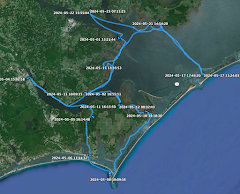
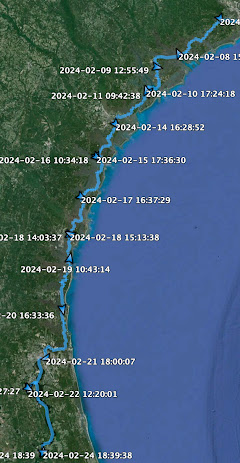

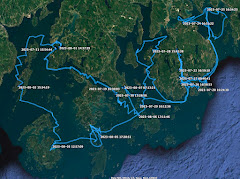

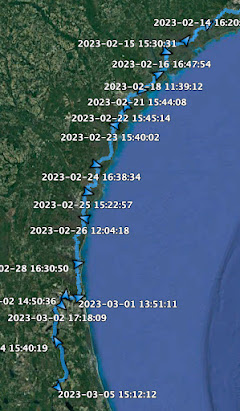

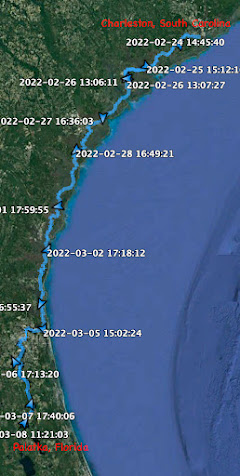
























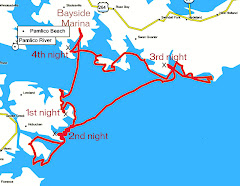


3 comments:
Jealous! I must remedy that, very soon.
I'm amazed, and flattered beyond words, that you'd reach back to May and remember the Oyster recipe.
I'm also jealous because those oysters are tremendous! The bigger the better I always say. The larger oysters may take a bit longer to cook; just keep in mind that when they become somewhat firm to the poke and the edges curl, they're ready. They'll carry-over cook between the time you take them from the pan to the plate. I'm confident you will be thrilled with the final product. My mouth is watering.
Baydog,
thanks for the final tips. I'll drop the lynnhaven oysters in first (though I may slurp one or two first), then follow with the smaller ones. This is gonna be good.
steve
Post a Comment